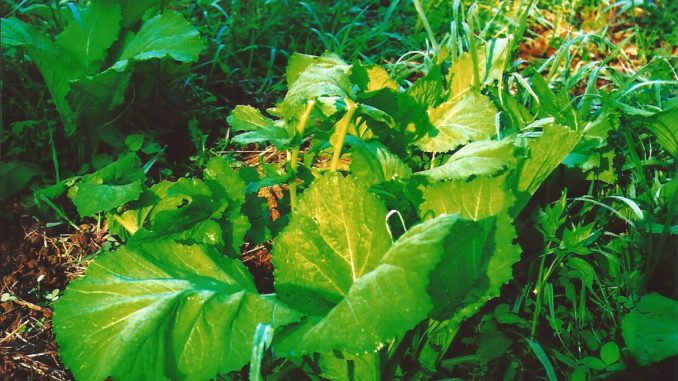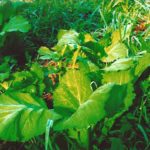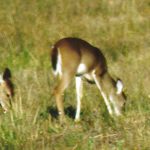
Hit a buck home run this month
If you like baseball, then you probably watched the World Series games between the Rangers and the Cardinals. If you did, you saw some excellent hitting — Albert Pujols hitting three homers in a game, Josh Hamilton hitting what Ranger fans thought was the Series winner in Game 6.
Hitting a home run does require power, but it demands really good eye and hand coordination. See the ball and put the bat solidly on the ball. Timing is very important when hitting a baseball.
Timing is also important for successful deer hunting. As I often say, I do not get excited come Oct. 1 because our deer are just not active. The weather is usually hot, and with low deer activity, it doesn’t make for good success.
This year I am looking at deer stomachs on several areas in the state to further document deer foods and weight gains of the various age classes over the season.
The deer killed the first week of bow hunting in Clinton primarily had native browse in their stomach — yaupon leaves, yellow Jessamine stems and leaves, privet stems and leaves and some fungi. The stomachs during the last week of October were full of water oak, cherry bark, cow oak and white oak acorns.
The start of November in Areas 1 and 6 would have been an excellent time for a bowhunter to connect with a deer with the acorns really starting to fall. The abundant mast crop in our area should last the deer through December and into January, and will be a key to success this year. The feeders and food plots may work, but when the acorns are abundant, deer will be sticking to them.
Success with food plots is all about timing also. I planted most of the patches at our 25-acre tract in Clinton shortly after the big 8-inch rain that we got from Hurricane Lee. Good soil moisture is a must for success with plantings, and it was excellent at that time. The growth of the turnip and mustard plants has been great, and the deer have been browsing heavily on the turnip leaves.
The Moreland clan and their friends have also been reaping the benefits, and have been eating mustards and turnips for several weeks. The other patches that I planted a few weeks later have simply not had enough rain to provide the moisture for growth like those that I first planted. I am hoping that with this excellent growth of clover, winter grass and brassicas, I will be able to write about the big 8-point buck harvested on Camp David this year.
Deer hunting success is also about hunting when the deer are active, especially during the rut. I visited my good friend Ken Mason in Bossier Parish the first week of November, and he was kind enough to take me deer hunting on his club. The weather was excellent, and I enjoyed watching several groups of does on the Friday evening of our hunt.
Their club does not shoot 6-month-old does because of a concern for harvesting nubby bucks (male fawns). Their overall goal is to shoot bucks with six or more points, so they do not harvest male fawns. They do not shoot 1½-year-old bucks; they do target the 2- to 3-year-old bucks (with an occasional 4-year-old that is able to escape the hunting pressure).
Ken told me to harvest a doe if I wanted to, but I elected to wait and see what happened on Saturday.
Hunters are not only confused about aging bucks on the hoof, but also antlerless deer. I watched a family group of three deer, the adult doe, the yearling doe (her fawn from the previous summer) and the fawn from this year. I also watched a family group of four that I thought contained two adults, a yearling doe and a single fawn.
It was apparent from my observations that reproduction was down. This habitat is pine dominated, needs some logging to create browse, and no doubt the drought has had an impact on the herd the past two seasons. There were also plenty of coyotes on this tract that may be having an impact on reproduction based on the low number of fawn sightings.
And finally it appears the club needs to increase their harvest of antlerless deer based on the low body weights of the does. Does with low body weights simply do not produce the number of fawns that does with good body weights do. It appears to be a combination of factors on this club that is impacting herd growth and development.
The next morning I was watching seven deer at daylight, which I thought were the same ones I saw Friday evening. I told Ken if I was presented with a shot less than 100 yards, he would probably hear the .444 go off. Three deer separated from the group and headed my way. I selected what I thought was the adult doe based upon the dark staining of her tarsal gland. The rut in Area 2 was beginning to start, and I thought this doe might be working the scrapes during the pre-rut.
At 70 yards I fired, and the deer was an adult, 3½ years old with a very low body weight. There is no way she would be able to successfully raise and produce twins with that low weight.
I suggested to Ken that they probably should consider increasing their harvest of does to some extent since they have no control over the timber management. From what I saw, the rut in Area 2 is right on schedule as predicted by the Sportsman, which means the rut in Areas 1 and 6 should likewise occur as predicted.
In my seminars, I have been stressing to hunters to look at the body of the deer. Keep in mind that in Area 2 in December, fawns are 6 months old, whereas in Areas 1 and 6, they are only 4 months old. The nubs of male fawns in Area 2 should be visible, but may not be visible on the male fawns in Areas 1 and 6. Since both bucks and does urinate in scrapes, the tarsal glands will become black in color over time, and this is another key to look at when field glassing deer along with head and body size.
The drought may have impacted antler growth, but from what I have seen and photographed in DeSoto Parish, the impact is small. There is a photo of a 10-point buck in my new book that I photographed in 2010 in DeSoto Parish and suggested to hunters in the book and at seminars to give it another year to grow. The buck as a 10-point probably would have scored 140 and would have been a good bow kill, but it would more than likely get better.
This year it has 13 points and very impressive G2s, 3s and 4s. My estimate for this year is 160+, and it very well could net in the 170s. Hunters when looking at antlers should focus on the G2s and G3s. If these points are 10 or more inches in length, it is probably a good deer. If the G3s are half the length of the G2s, another year may produce a real trophy. The hunting season is harvest time, and with proper timing, consideration of rut factors, food factors and weather conditions, you might just hit a home run.




